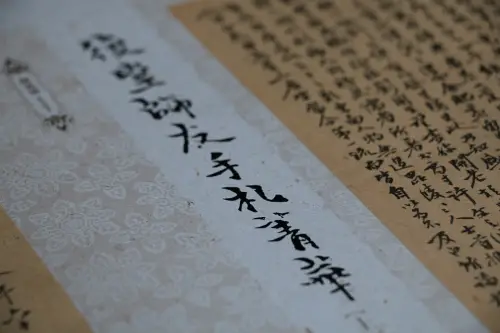Some people might find it hard to tell the difference between certain styles of writing. For one, the Chinese and Japanese writing styles appear to be quite similar at first glance. So how can you tell them apart? Read this article to find out more about the Chinese and Japanese styles of writing and how they are differentiated.
Summary Table
| Chinese Writing | Japanese writing |
| Developed in the early 2nd millennium BC | Borrowed from China around the 8th century CE |
| Writing entirely relies on Hanzi | Kanji writing relies heavily on the use of Chinese characters |
| Chinese characters are more straight | Japanese characters are more curved |
| Chinese writing is tonal | Japanese writing uses a pitch accent |
| Uses 10 vowels | Has only 5 vowels |
| Has a total of 25 consonants | Has only 18 consonants |
| Basic sentence structure in writing is SVO (subject-verb-object) | Basic sentence structure in writing is SOV (subject-object-verb) |
Descriptions

Chinese writing is basically a logographic writing system that emerged around the 2nd millennium BC. It was the foundation of the writing systems in the Eastern part of the world. Early inscriptions were seen on relics as early as the 18th and 12th centuries BC, during the Shang dynasty. Chinese writing is non-alphabetic and it uses characters to write syllables with certain meanings.

Japanese writing was noted to have been borrowed from the Chinese style writing around the 8th century CE. It is a combination of syllables and certain elements. They usually have two writing systems, specifically the Kana and the Kanji systems. The Kanji system is further divided into two when writing the Japanese language. These are the Hiragana and Katakana.
Chinese Writing vs Japanese Writing
The obvious difference between Chinese writing and Japanese writing can be seen in the appearance of the characters. Chinese characters appear to be more straight, while Japanese characters look curvier. But the differences are more than that. In terms of origin, the Chinese style of writing came way before the Japanese style. Chinese writing dates back to the 2nd millennium BC, whereas the Japanese actually borrowed and imported characters from China in the 8th century CE to create their language.
Chinese writing relies on Hanzi, which are single, monosyllabic words. Japanese Kanji writing, on the other hand, relies heavily on Chinese characters. In terms of pronunciation, the Chinese and Japanese styles have no phonetic similarities. Chinese writing is very tonal, while Japanese writing uses pitch accents or rising and falling intonations. There are around 420 sound combinations in the Chinese writing style compared to only 110 sound combinations in the Japanese writing style.
Chinese writing uses 10 vowels and 25 consonants, while Japanese writing has only 5 vowels and 18 consonants. When it comes to the basic sentence structure, the order for the Chinese is always SVO or subject-verb-object. It is different for the Japanese as they follow the SOV order which is subject-object-verb.
However, even if the Japanese writing system, Kanji borrowed most of its characters from the Chinese writing system, it still is individually standing. The Japanese language has evolved its own set of meanings and pronunciations.
For professional academic writing help please visit CustomWritings.com whose experts will handle any essay assignment for you.





